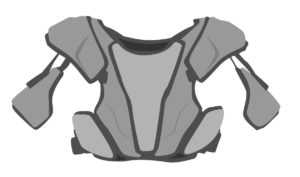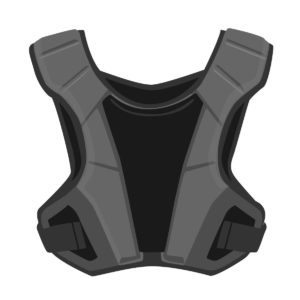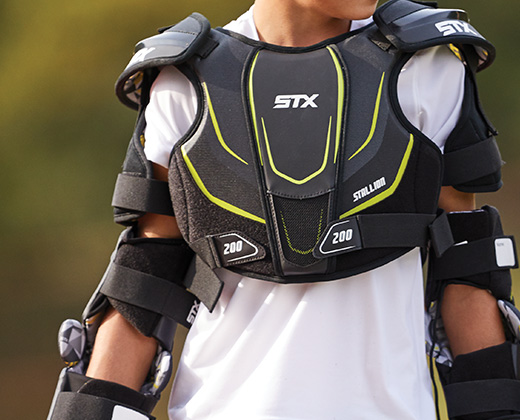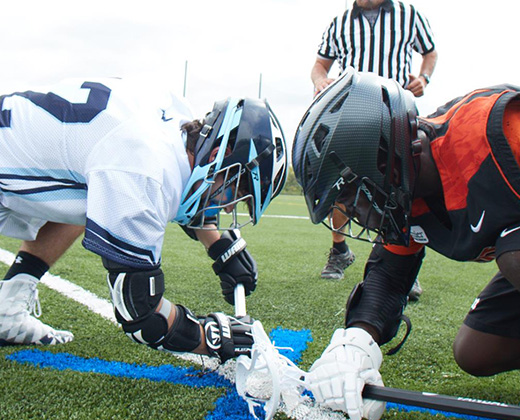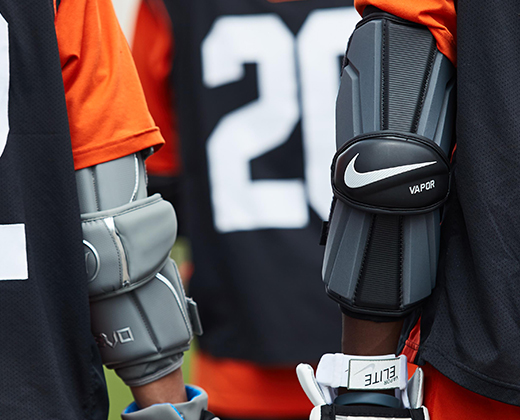How to Buy Lacrosse Shoulder Pads
The fastest game on two feet requires players to be well protected. Keep yourself and your equipment in check with these helpful buying tips.
Important Notice: As of January 1, 2022, all lacrosse shoulder pads must meet requirements set by the National Operating Committee on Standards for Athletic Equipment (NOCSAE) and be certified by the Safety Equipment Institute (SEI). Check to make sure your pads have a label featuring both the NOCSAE and SEI logos (image below). If pads do not have this label, they cannot be used in competitive play.
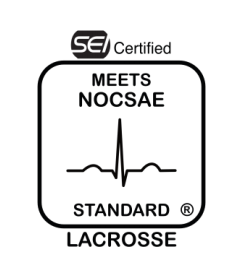
Shop NOCSAE Certified Lacrosse Shoulder Pads at DICK’S
Lacrosse a contact-heavy sport. To help guard players during game play, protective equipment is a must. Shoulder pads are one of the most vital protective pieces a lacrosse player wears, so finding the right fit is important to help ensure maximum safety and maximum fun.
Lacrosse shoulder pads are designed to protect your shoulder blades, collarbone and sternum while providing additional coverage to your upper back as well. Only men’s lacrosse leagues require players to wear shoulder pads, as women’s lacrosse tries to limit physical play and additional pads can potentially encourage this aspect of the game.
Today’s players have the option of gearing themselves up with traditional shoulder pads, hybrid pads or shoulder liners. Each style offers proficient protection and flexibility, but their differences in coverage make them better suited to different positions.
“I remember, even when I first started playing, that the pads were big and bulky,” says former collegiate lacrosse player and DICK’S Sporting Goods Associate Ryan Wallace on the differing levels of shoulder pad protection. “Pads have come a very far way now.”
TRADITIONAL SHOULDER PADS
Players looking for the most protection and coverage should try traditional shoulder pads. This style of protection provides athletes with layered shoulder caps and ample coverage over the clavicle and deltoids.
Many traditional shoulder pads feature a hard-shell casing over the condensed padding, as well as removable bicep pads. These add-ons are worn like a sleeve and are designed to sit high and snug on the bicep.
Traditional shoulder pads are a favorite among attackmen and more physical
players. Wallace notes that attackmen experience more physical play in lacrosse, so it’s advised that they gear up accordingly.
It is also advised that youth players wear traditional shoulder pads for the added coverage and security while they learn and progress through the lacrosse ranks.
HYBRID SHOULDER PADS
Designed with a sleeker, more streamlined profile, hybrid shoulder pads are a great option for players looking for flexibility while still remaining well-protected. “It’s gotten to a point now where everything is made tighter and more fitting as opposed to the bulkier pads of yesteryear,” Wallace adds.
This style of shoulder pad features anatomically-aligned padding across the chest and collarbones without the layered shoulder caps seen on traditional pads. Hard-shell protection is still sometimes available in hybrids, as well as add-on bicep pads.
Hybrid shoulder pads are a popular choice among midfielders, defensemen and more agility-driven players.
SHOULDER LINERS
Shoulder liners are the lightest option available in lacrosse shoulder protection and feature the least amount of padding. Essentially, shoulder liners are the same as hybrid shoulder pads without the additional bicep pads and offer less reinforced protection throughout the frame. This style of shoulder pads can be great for players who want lighter pads during hot practices or for advanced athletes who are strong enough and well-seasoned in adult lacrosse players.
Despite the fact that shoulder liners are the least restrictive models available, youth players should refrain from wearing this style.
No matter which style you think best suits your playing needs, be sure to look for a set of lacrosse shoulder pads that feature breathable materials for maximum comfort. Also, make sure that the hook-and-loop or buckle strapping system is efficient and workable.
SIZING
Regardless of which style you choose, players should look for shoulder pads that fit snug to the body without restricting movement, while offering ample padding in the sternum and collarbone areas.
“You don’t want your pads riding up into your neck but sadly, you see some kids out there who are improperly fit,” says Wallace. “There are starter kits available, though, where you can purchase a full package of pads which are generally directed toward that smaller youth player.”
Pads are sized by the XS-S-M-L-XL scale, with each brand having their own specific measurements. Be sure to pay attention to their respective size charts. If your shoulder pads are the proper size, the sternum pad will be directly over the chest and not drop too low. The collar should be snug to the body, while still allowing you to move without much restriction.
A NOTE ON RIB PADS
In addition to shoulder pads, there are also rib pads available for more physical players looking for added coverage. Rib pads are worn underneath shoulder pads and are designed to provide coverage to the lower abdomen and midsection. Rib pads are sized in the same fashion as shoulder pads, so complementing your equipment and adding security is an easy process.
Adding rib pads to a youth player’s gear bag can also be beneficial, according to Wallace. “In youth lacrosse, it should be all about protection,” he says. “The added coverage can give athletes and parents a stronger sense of security.”
As is the case with any protective equipment, if you have any questions on lacrosse shoulder pads, be sure to ask a coach or league official to ensure you’ll have the right lacrosse gear to help keep you safe and legal to play this fast-paced sport.
Finding the right shoulder pads should be a top priority for lacrosse players at every level. Now that you know what to look for and how to find the right fit, you’re ready to travel coast-to-coast with confidence this upcoming lacrosse season.


